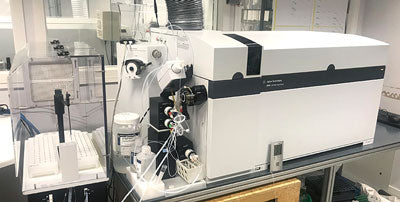Spectroscopic applications typically require excellent accuracy and precision to ensure the ongoing validity of results. Today’s analytical ICP instruments are extremely well designed and can produce quality data for over a decade if the instrument is well maintained. Along with scheduled maintenance, another resource to safeguard quality measurements is to utilize proper calibration standards for wavelength, mass, and concentration.
Wavelength & Mass Calibration
ICP-OES instruments require periodic wavelength calibration. This wavelength calibration is performed using a calibration standard that includes elements having emission lines across the UV/VIS spectrum. Maintaining proper wavelength calibration is important for ensuring peak centering is accurate, thus maximizing instrument sensitivity. Wavelength calibration will also ensure that any spectral interference identification built into the instrument software will be as accurate as possible.

Performing mass calibration on ICP-MS will provide similar benefits as wavelength calibration on ICP-OES such as maximizing instrument sensitivity and correcting for possible interferences.
Concentration Calibration
Concentration calibration is the process of guaranteeing the spectrometer’s response to an analyte of known concentration, thus enabling test samples to be accurately quantified. Creating concentration calibration standards can be challenging when trying to blend multiple analytes. The laboratory technician needs to account for all possible wavelength or mass interferences resulting from mixing a blend of analytes as well as making sure the blend will be stable to ensure all analytes will remain in solution.
Notwithstanding the cost, documenting these standards can be a trial, storing standards for future use represents challenges, and human error can be a real risk. Hence the value of outsourcing CRMs and stopping preparing your own analytical standards in the lab.

Leave a comment